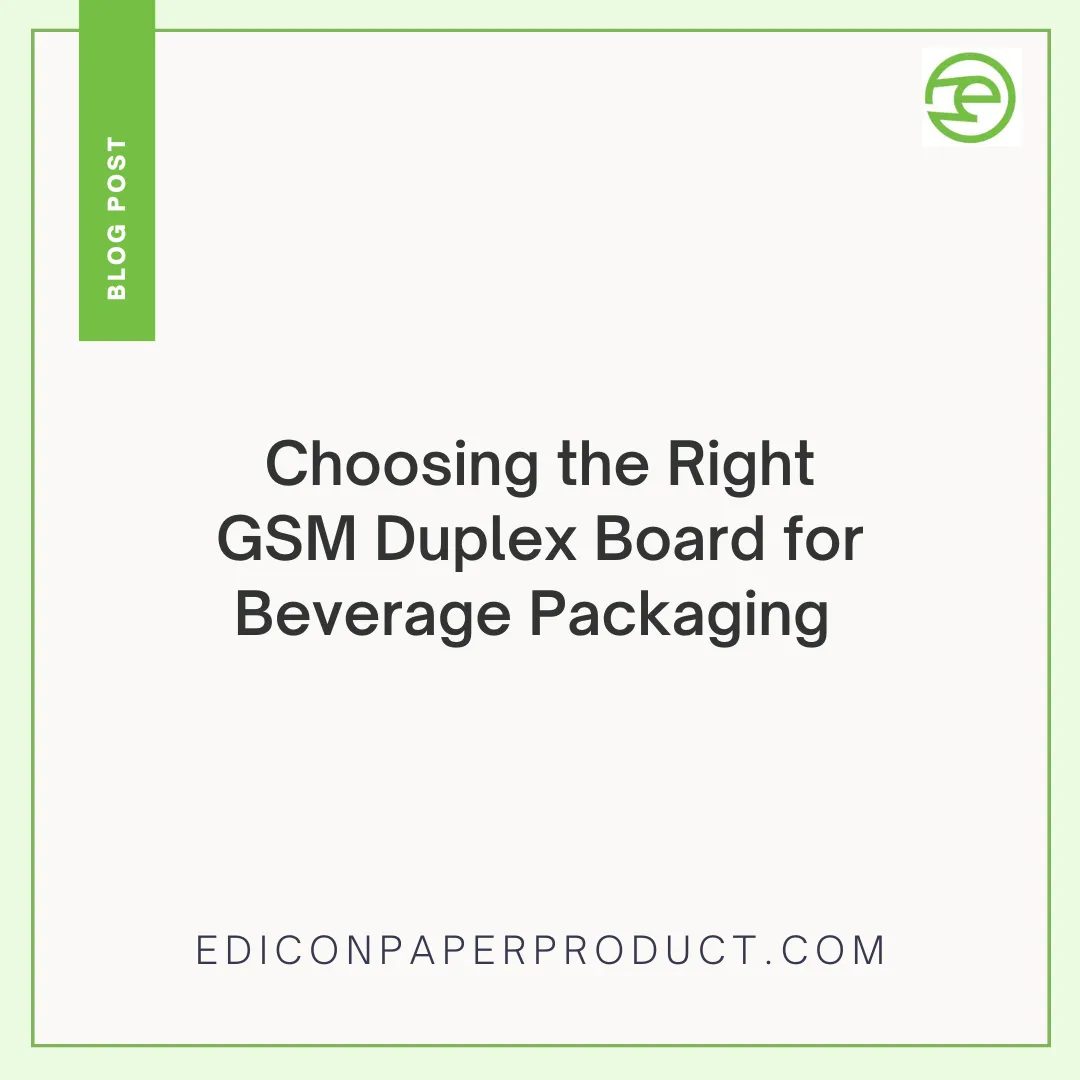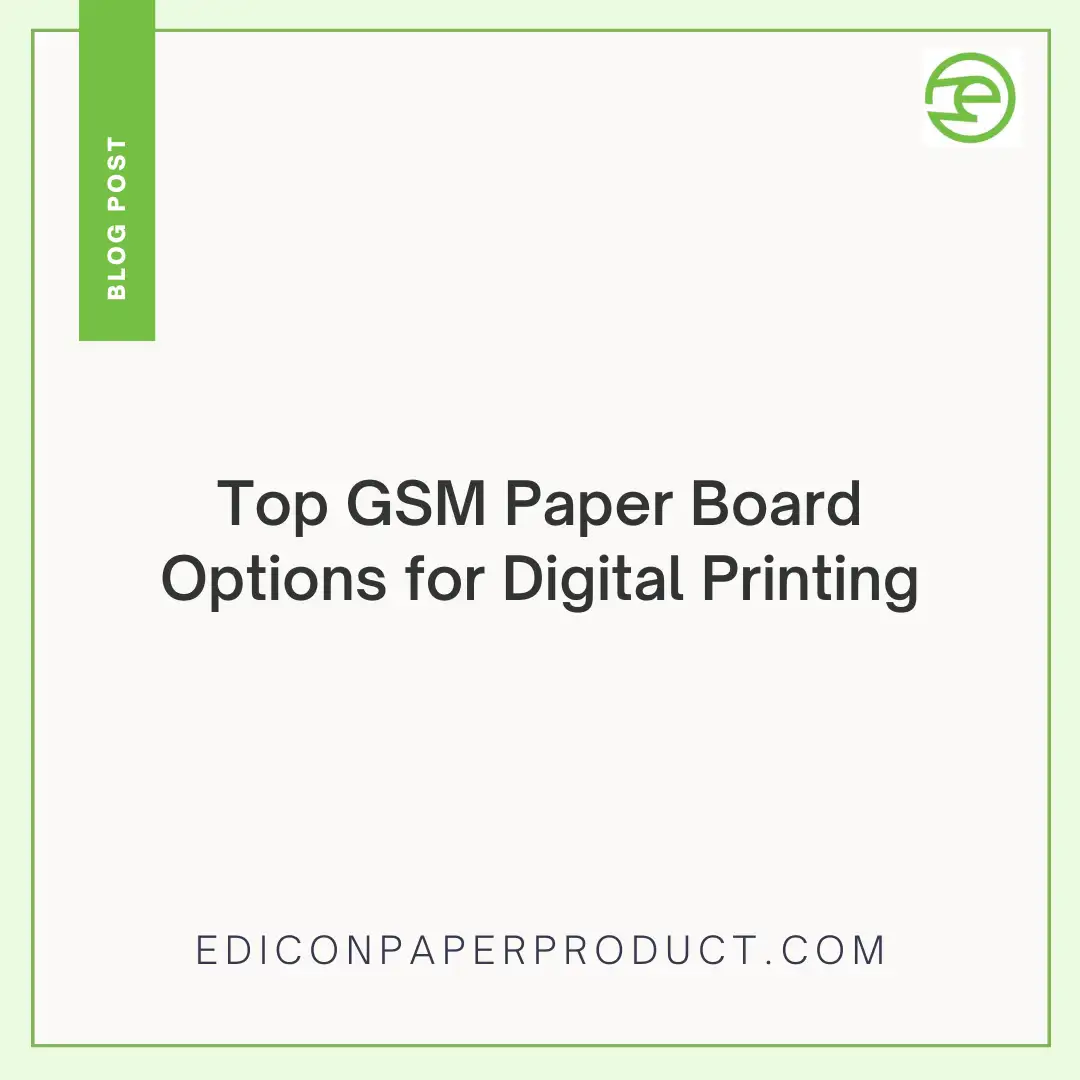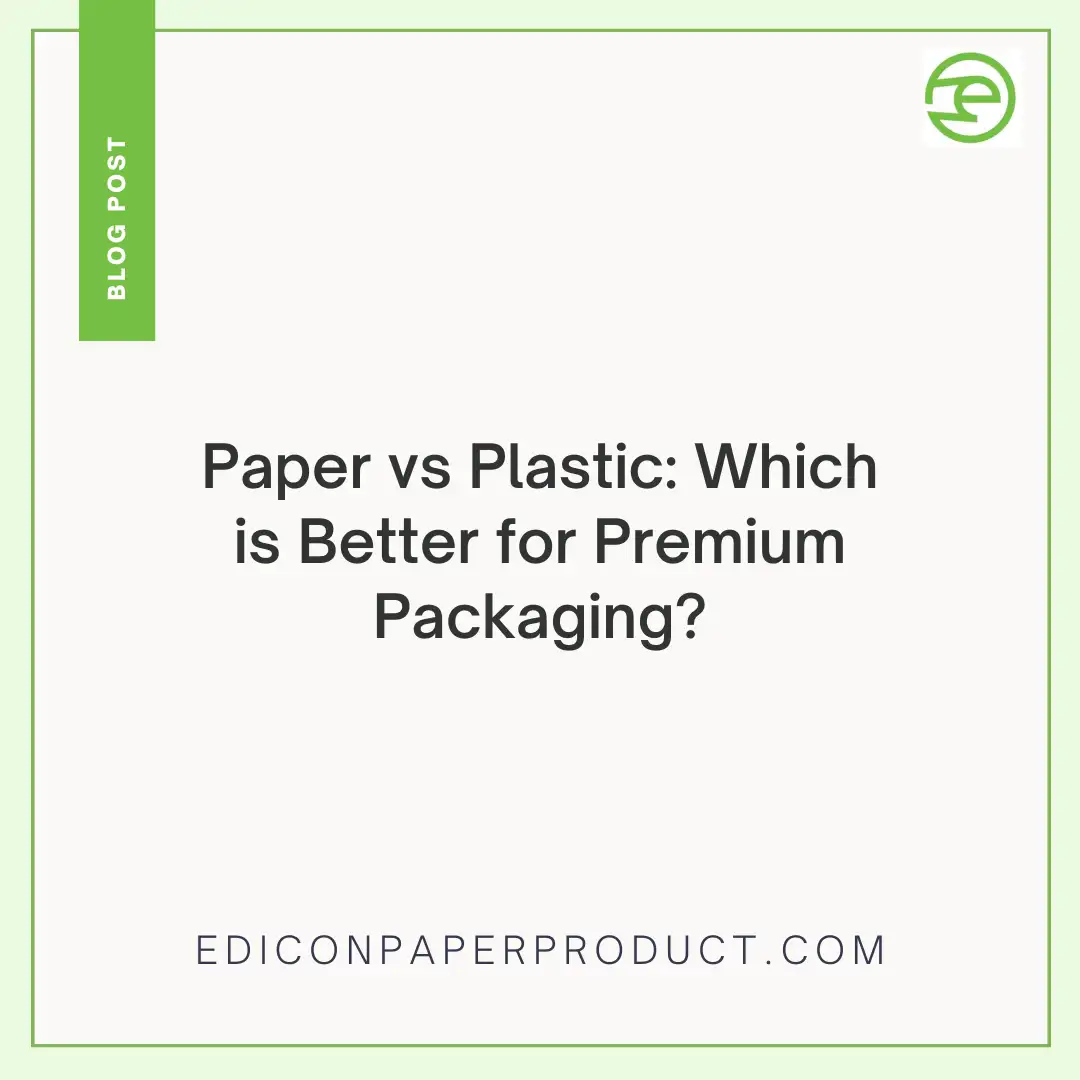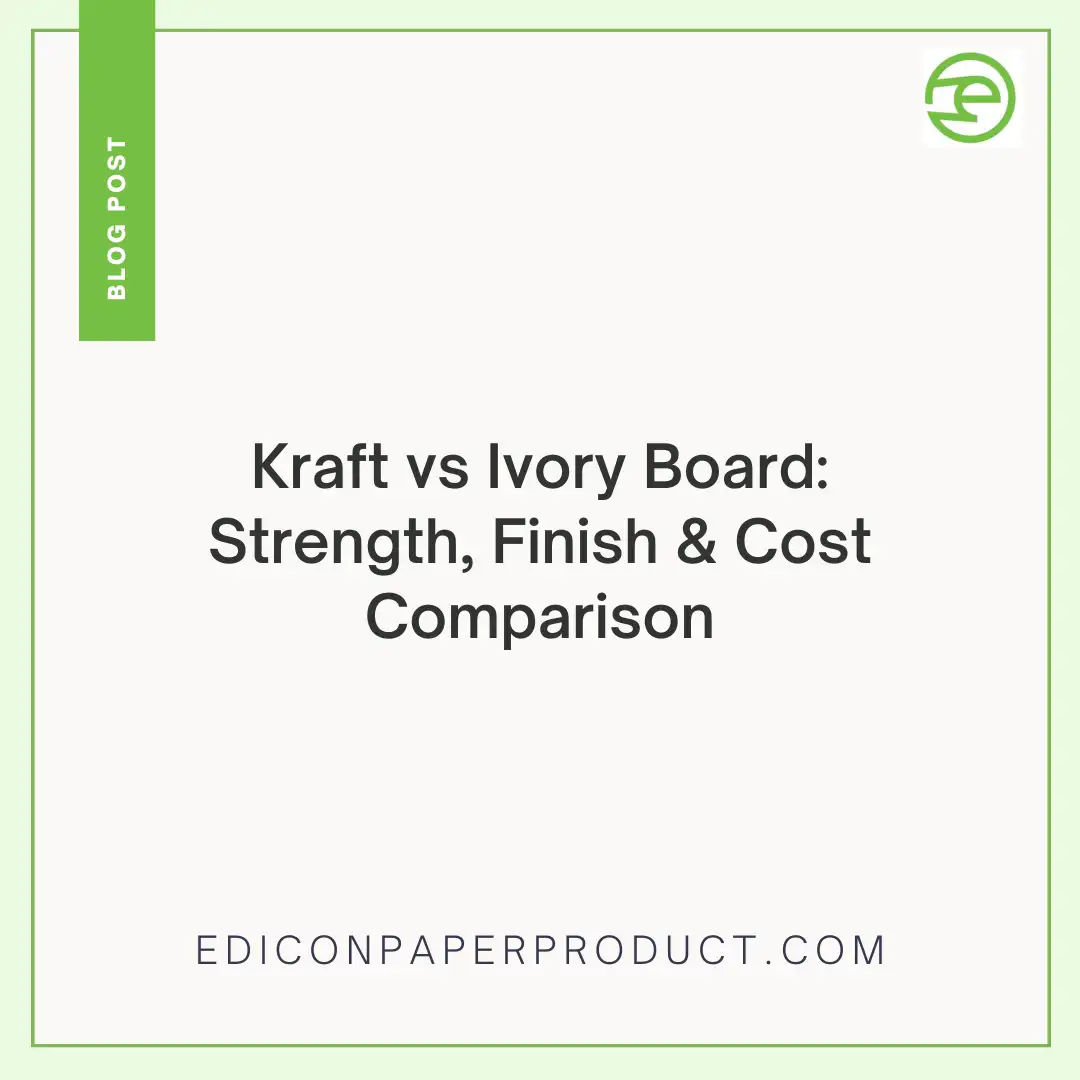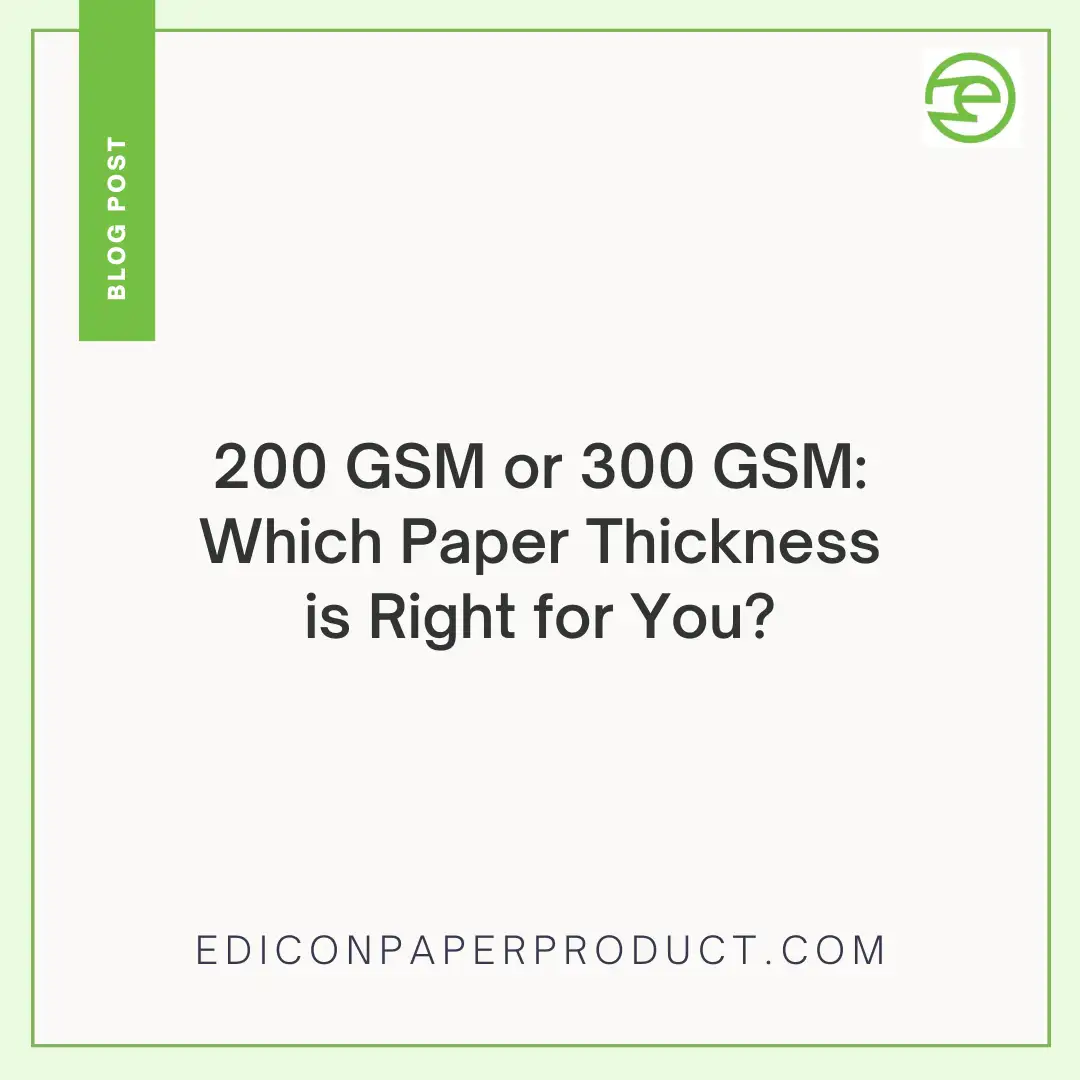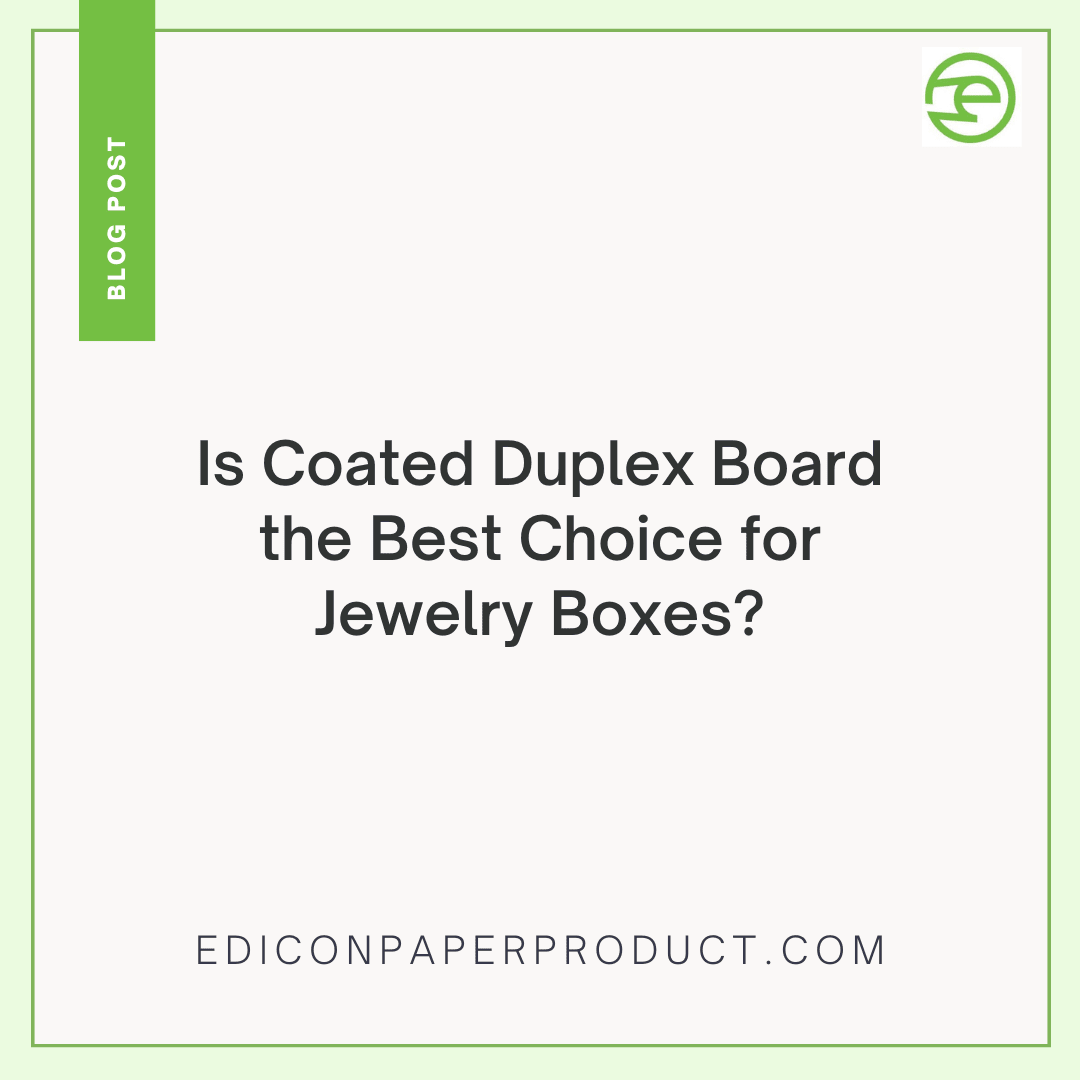Choosing the Right GSM Duplex Board for Beverage Packaging
When you're getting your drinks ready for customers, the box they go in really matters. It’s not just about holding the bottles or cans; it’s about protecting them and making your brand look good. Choosing the right duplex board packaging is a big part of that. You’ve got different weights, different finishes, and you need to figure out what’s best for your specific beverage packaging needs. Let's break down what you need to know to pick the right stuff.
Key Takeaways
• GSM, or grams per square meter, is a key factor in duplex board packaging, affecting how strong and durable your beverage packaging will be.
• Higher GSM generally means a stronger board, better for heavier drinks or when your packaging needs to withstand rough handling during shipping.
• The surface of the duplex board, whether it's a white back duplex board or a grey back duplex board, impacts print quality and how your branding looks.
• Coated duplex board offers a smoother surface for more vibrant and detailed printing, which can make your beverage packaging stand out.
Balancing the need for strength, printability, and cost is important when selecting the right GSM and type of duplex board packaging for your products.
Understanding Duplex Board Packaging for Beverages
So, you're looking into packaging for your drinks, and you keep hearing about duplex board. What exactly is this stuff, and why should you care? Think of duplex board as a workhorse in the packaging world. It's a type of paperboard that's made by bonding two layers of paper together. This construction gives it a good balance of strength and flexibility, making it a popular choice for all sorts of packaging needs, including drink packaging.
What is Duplex Board Packaging?
At its core, duplex board is a multi-layered paperboard. The way it's made, usually by combining different types of pulp, gives it specific characteristics that are really useful. For beverage packaging solutions, this means you get a material that can stand up to the demands of holding liquids, protecting them during transit, and looking good on the shelf. It's a common bottling and packaging material because it's generally cost-effective and can be printed on easily, which is a big plus for branding. When you're thinking about packing materials for shipping, especially for beverages, you need something reliable, and duplex board often fits the bill.
Types of Duplex Boards: White Back vs. Grey Back
![]()
When you're looking at duplex boards, you'll often see them described as either 'white back' or grey back. This refers to the color of the inner layer, the one that isn't the primary printing surface.
• White Back Duplex Board: This type has a white inner layer. It's often preferred when the inside of the packaging might be visible or if you want a cleaner, more uniform look even on the less visible surfaces. It can sometimes offer a slightly better barrier against moisture compared to duplex board with grey back, depending on the specific coatings.
• Grey Back Duplex Board: This is the more common and usually more budget-friendly option. The inner layer is made from recycled paper pulp, which gives it that greyish hue. For most beverage packaging, where the primary focus is the outer printability and structural integrity, the grey back is perfectly suitable and a smart choice for keeping costs down.
• Coated duplex board adds a layer or treatment that improves print sharpness, resists moisture, or enhances gloss/matte finishes. These are valuable for premium beverage packaging solutions especially for bottled drinks where condensation or water exposure is expected.
The choice between white back and grey back often comes down to a balance between aesthetics, specific barrier requirements, and, of course, cost. For many drink packaging applications, the grey back offers excellent performance without the added expense of a fully white interior.
How Does Beverage Type & Distribution Affect Board Choice?
• Carbonated drinks or beverages under pressure may require thicker or reinforced duplex board packaging to prevent bulging or failure.
• Ambient vs chilled drinks: chilled drinks tend to sweat; packaging must resist moisture. Condensation can degrade uncoated or poorly coated duplex board.
• Transportation and stacking: long transit or multi-tier stacking demands higher GSM and structurally robust board to avoid collapse, squashing, or damage.
The Importance of GSM in Beverage Packaging
When you're picking out the right board for your beverage packaging, you'll see a lot of talk about GSM. What exactly is it, and why should you care? Basically, GSM stands for Grams per Square Meter. Think of it as the weight of the paperboard. A higher GSM number means a thicker, sturdier board, while a lower GSM means it's lighter and more flexible. This might seem like a small detail, but it really makes a difference in how your product is protected and how it looks on the shelf.
What is GSM and Why Does it Matter?
So, GSM is just a way to measure how heavy the paperboard is for a specific area. It's like comparing apples to apples, no matter the size of the sheet. For beverage packaging, this weight directly relates to the board's strength and its ability to hold up during shipping and handling. It also plays a big part in how well ink sticks to the surface, affecting the final look of your branding. Choosing the right GSM means you're getting packaging that's both tough enough and looks good.
How GSM Affects Durability and Protection
The weight of the board has a direct impact on how well it protects your beverages. Thicker, heavier boards (higher GSM) offer more rigidity and better resistance to crushing or tearing. This is especially important for larger bottles or multipacks that can be heavy. On the other hand, lighter boards (lower GSM) might be fine for smaller, lighter drinks or inner packaging, but they won't offer the same level of protection.
What GSM Range Works Best for Various Beverage Products?
| Use Case | Minimum GSM | Ideal GSM | Reason |
|---|---|---|---|
| Small cartons (juice boxes, single-serves) | ~200-250 GSM | 250-300 GSM | Enough stiffness for printing and handling, but not overly heavy |
| Bottled product sleeves or labels | 180-220 GSM | 220-260 GSM | Enough weight to adhere/affix, but flexible if sleeve |
| Large tins, cans, or heavy bottles | 280-350 GSM | 300-350 GSM | High rigidity and strength to protect during transport |
| Cold or chilled storage | Same as above but consider moisture & wet strength coatings | — | Coated or treated duplex board helps resist moisture damage |
Impact of GSM on Print Quality and Aesthetics
Beyond just strength, the GSM of the board also affects how your graphics and branding appear. A smoother, denser board (often associated with higher GSM) generally allows for sharper, more vibrant printing. It means less ink might soak into the fibers, leading to crisper lines and brighter colors. If your brand relies on eye-catching visuals, picking a board with an appropriate GSM for printing is key. Some boards also come with coatings, which further improve printability, but the base GSM still matters for the overall feel and look.
Consider this:
• Ink Holdout: Higher GSM boards tend to have better ink holdout, meaning the ink sits on the surface rather than soaking in, which results in sharper images.
• Surface Smoothness: Denser boards are often smoother, providing a better canvas for detailed graphics and text.
• Overall Finish: The GSM can influence how a coating interacts with the board, impacting the final sheen and feel of the packaging.
Selecting the Optimal GSM for Your Beverage Packaging
So, you've got your beverage, and now you need the perfect box to hold it. Picking the right GSM for your duplex board is a big deal, and it's not just about making things look pretty. It's about making sure your product gets from the bottling plant to the customer's hands without any drama.
Factors to Consider: Beverage Type and Size
Think about what you're actually putting in the box. Is it a single can of sparkling water, a six-pack of craft beer, or maybe a fancy bottle of wine? Lighter items might be okay with a lower GSM, but if you're dealing with heavier bottles or multiple units, you'll need something more robust. A heavier beverage, like a glass bottle of juice, will need a board with a higher GSM to prevent crushing or damage during transit. For multi-packs, the board needs to withstand the combined weight and potential shifting of the individual units. The goal is to match the board's strength to the product's weight and volume.
Considering Shipping and Handling Requirements
How is your product going to travel? If it's just going from the store shelf to someone's home, maybe you don't need the absolute toughest board. But if it's going through the mail, being stacked high in a warehouse, or handled by multiple people, you'll want to bump up that GSM. Think about the journey your packaging will take. A board that's too flimsy could lead to damaged goods, unhappy customers, and costly returns. For products that need extra protection during shipping, consider looking into durable kraft paper options.
Balancing Cost and Performance with GSM Choice
Here's where it gets tricky: higher GSM usually means a higher price tag. You need to find that sweet spot where your packaging is strong enough and looks good, but doesn't break the bank. It’s a trade-off. A lower GSM might save you money upfront, but if it leads to damaged products, the long-term costs could be much higher. On the flip side, going too high with the GSM for a lightweight product is just wasting money. It's all about getting the best performance for the price.
Here's a general guideline:
• Light Beverages (Cans, Single Bottles): 250-300 GSM
• Standard Multi-Packs (6-packs, 12-packs): 300-350 GSM
• Heavy or Premium Beverages (Glass Bottles, Wine): 350-400+ GSM
Ultimately, the right GSM is the one that protects your product effectively without adding unnecessary expense. It's a careful calculation based on your specific product and its distribution chain.
Coated vs. Uncoated Duplex Boards for Beverages
![]()
When you're picking out the right duplex board for your beverage packaging, you'll run into two main types: coated and uncoated. It's not just about looks, though that's a big part of it. The coating really changes how the board performs, especially when it comes to printing and protecting your product.
Uncoated duplex boards are pretty straightforward. They have a more natural, matte finish. This can give your packaging a certain rustic or organic feel, which might be exactly what you're going for with certain beverage brands. They're generally more affordable than their coated counterparts. However, the print quality might not be as sharp, and they can be more susceptible to moisture and scuffing. If your beverage isn't particularly sensitive to humidity and you're aiming for a simpler aesthetic, uncoated might work.
Coated duplex boards, on the other hand, have a smooth, glossy, or satin finish applied to one side (usually the printing side). This coating does a few things. First, it makes the surface super smooth, which means inks sit on top rather than soaking in. This results in brighter colors, sharper details, and a more vibrant print that really makes your beverage stand out on the shelf. Second, the coating adds a layer of protection. It offers better resistance to moisture, grease, and general wear and tear, which is pretty important for drinks that might sweat or be handled a lot.
Which Coated Finishes are Best for Drink Packaging?
• Gloss coatings enhance visual appeal, make colors pop, and work well for premium bottled beverages or artisan drinks.
• Matte finishes give a subtle, elegant look, often chosen for luxury or craft beverages.
• Barrier coatings or lamination can protect against moisture, grease, or oils. These are especially useful for packaging that might experience condensation or direct contact with ice.
Think about what your beverage needs. If it's a craft soda with a natural vibe, maybe uncoated is the way to go. But if you're launching a premium juice or energy drink where visual appeal and durability are key, that extra cost for a coated board is probably worth it. It's all about matching the board's properties to your product's needs and your brand's image.
Checklist: Selecting the Right GSM Duplex Board for Your Beverage Packaging
• Define your product’s physical needs (weight, capacity, chilled/warm).
• Map the distribution & handling environment (transport, stacking, humidity).
• Choose coating type (gloss, matte, barrier) based on moisture and branding.
• Decide white back vs grey back based on visual importance and cost.
• Ensure regulatory compliance and food-safety certifications.
• Evaluate sustainability credentials (recyclability, sourcing).
• Estimate costs vs returns: minimize damage waste and maximize shelf appeal.
Partnering with the right manufacturer makes this process smoother. Like Edicon Paper, a trusted duplex board manufacturer and supplier, offers a wide range of coated duplex board, white back duplex board, and grey back board in different GSM options. Their focus on quality control, food-grade certifications, and sustainable sourcing helps beverage brands choose packaging material that meets performance, safety, and environmental standards without compromising on cost or printability.
Wrapping It Up
So, picking the right duplex board for your beverage packaging really comes down to what you need. Think about how strong the package needs to be, how good you want the printing to look, and, of course, your budget. A heavier GSM board will give you more sturdiness, which is great for heavier drinks or if the packaging will get handled a lot. If your brand relies on eye-catching graphics, a smoother, coated board with a higher GSM will make those colors pop. Don't forget about the environmental side, too many duplex boards use recycled materials, which is a big plus these days. Ultimately, finding that sweet spot between performance, appearance, and cost will lead you to the best choice for your specific beverage product.

